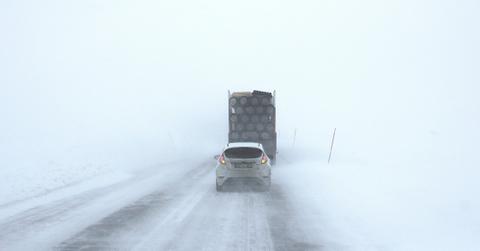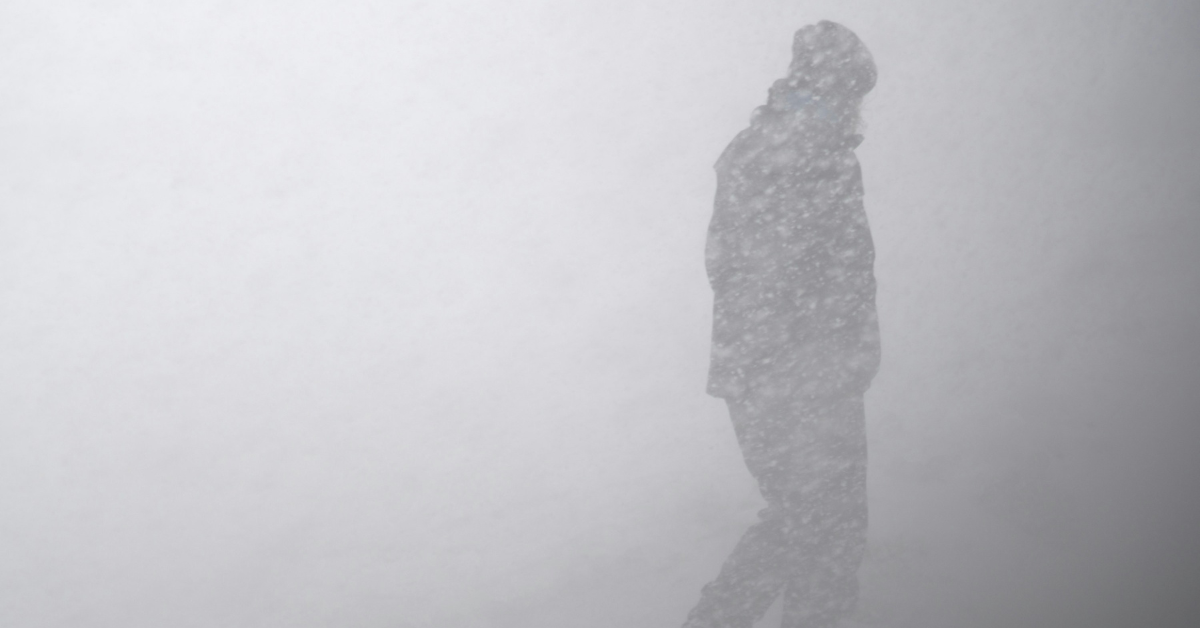Do You Have a Snow Squall Warning? What This Means for Your Weather
You'll need to know what to do if you're driving when one of these squalls pops up.
Published Dec. 5 2024, 12:25 p.m. ET

While wind and chilly temperatures are common winter occurrences, one type of winter weather can pop up unexpectedly, creating dangerous conditions for anyone caught unprepared: snow squalls.
Snow squalls aren't a new weather phenomenon, but some areas may not be used to seeing these alerts pop up when winter weather strikes.
So, what is a snow squall and what do snow squall warnings mean? Keep reading to find out everything you need to know when Mother Nature whips up a quick and hard-hitting snow squall where you live, prompting one of these warnings.

What is a snow squall warning?
A snow squally warning is issued by weather experts when the conditions are right for a snow squall. According to the Weather Channel, a burst of winter precipitation qualifies as a snow squall when it comes on quickly, bringing an intense amount of snow that only falls for a short period.
These types of conditions can occur quite fast, limiting visibility They are usually accompanied by strong bursts of wind, as well.
These squalls typically pop up in small or isolated areas and require those caught in them to take emergency action. That may include pulling off the road until visibility improves if you're driving, or seeking shelter from the elements if you're caught outdoors when the squall strikes.
Snow squall vs. blizzard: what's the difference?
While a snow squall can admittedly cause blizzard-like conditions, the two weather patterns are different. That's because squalls don't last as long, and AccuWeather says their intensity will typically burn out in under an hour.
Blizzards, on the other hand, can rage on for much longer. Additionally, snow squalls are typically way more isolated than blizzards. Where a blizzard may impact a whole state or region, a snow squall may only hit a certain town.
What should you do during a snow squall?
If you're caught in one of these storms, the first thing you'll want to do is remember not to panic. Secondly, you'll want to get yourself someplace safe. That may mean coming in from outside or taking cover in a sheltered area if you don't have the option to get indoors.
If you're on the road when a squall strikes, you'll want to pull over as soon as you can safely. If that isn't an option, the National Oceanic and Atmospheric Administration (NOAA) recommends driving "defensively." That may mean turning on your hazard lights or headlights and adding distance between yourself and the other cars on the road.
If you lose traction while driving, NOAA says you should stay calm, pump your foot up and down on your brakes, and avoid trying to steer away from the slide.
Just like with any other weather emergency, you should remain alert to changing conditions when a snow squall warning comes through, and keep your phone or radio close so you can get updates as the conditions change.